Story: Suando no paraíso – uma caminhada através da Suíça
🍫🏔️Sweating in paradise – a walk across Switzerland 🐮🧀
For English, please scroll down to 🇬🇧
Depois de percorrer parte do Caminho de Santiago pela Via do Norte, na Espanha (#31), viciei-me em caminhadas. As rotas religiosas, sobretudo, me atraem pelo significado histórico e pela quantidade de mosteiros e catedrais ao longo do trajeto. Além disso, têm ótima infraestrutura de sinalização, hospedagem e alimentação. Perrengue chique, para resumir.
Falando em chiqueria, caminhei 320 km pela Suíça seguindo os passos de Fritz, Hans e Greta que, séculos atrás, deixavam seus claustros em Hamburgo, Munique, St. Gallen ou Innsbruck para visitar o santo lá na Galícia. A Via Jakobi corta a Suíça ao meio, beirando morros, lagos e vales, com os Alpes sempre de pano de fundo. Caminhada vigorosa, com vistas quase obscenas de tão voluptuosas e perfeitas. Houve momentos em que me senti, verdadeiramente, no paraíso.
Saí de Konstanz, na fronteira com a Alemanha, e, logo na primeira floresta em que me enfiei, passei por uma menina de capuz vermelho carregando uma cesta de vime e cantarolando. Deve ter sido alucinação — até porque não vi nenhuma vovozinha nos anúncios de óbitos do jornal do dia seguinte. Só o de um lobo atropelado. Coitado. Falando em jornal, cada vale ou vila tem o seu, lido religiosamente em cafés e estações de trem. As notícias locais sempre têm mais importância do que o que acontece do outro lado da montanha.
A Suíça tem múltiplas identidades. Só idiomas oficiais são quatro: alemão, francês, italiano e romanche. O mais exótico — o tal romanche — é curiosamente o mais parecido com o português. Quer ver? Bun di, co vai? Vai bain, engraziel. Só que quase ninguém fala, exceto em vales na fronteira com a Itália — algo como seis senhoras de 90 anos e um etnólogo de Stanford. Para dar algum sentido ao meu trajeto (ao menos para mim), caminhei até onde o alemão deu lugar ao francês. Gastei todo o vocabulário que restou das minhas aulas no Goethe-Institut.
Os suíços são o povo mais inovador do planeta. Também são incansáveis construtores de túneis, estradas e barragens. Gostam de aperfeiçoar o perfeito — por isso, viajar pela Suíça é um prazer. Inventaram o chocolate ao leite e agora desenvolvem uma vaca geneticamente modificada que produz Toddynho (as da Nestlé e Nescau). Cada vilarejo fabrica um tipo diferente de queijo. Nos restaurantes locais, a comida vem sempre da região. Quase enjoei de tanta torta de maçã, abóbora assada e rösti (a famosa “batata suíça”) com ovo. Comia a paisagem, literalmente.
Falando em vacas — responsáveis pela trilha sonora da viagem com seus sinos incessantes —, elas andam chocadas com as tarifas do Trump. Com a queda na demanda de queijos suíços nos EUA, 5% do rebanho do país deverá ser abatido até o fim do ano para equilibrar o preço do leite. Se soubesse, teria abraçado cada uma e agradecido por deixarem a trilha tão pitoresca. Adorei cada cocô em que pisei, o cheiro de estrume, o feno fermentado…
Minha rotina era simples: acordava com o sino das sete, fazia algumas flexões e alongamentos antes do café da manhã — sempre o mesmo, invariável: ovos cozidos, pão, queijo, uma fruta e café. Saía às 8h30 e caminhava quase sem parar até a cidade seguinte, a 15, 20 ou 25 quilômetros de distância. Entre a saída e a chegada, sempre havia um morro enorme para escalar e uma ribanceira escorregadia para descer. Cruzava fazendas, trilhas íngremes, lagos azuis, florestas e campos de milho. Via vacas marrons, pretas, peludas, chifrudas — umas calmas, outras mais temperamentais, que vinham me avisar para parar de tirar fotos.
Por ser uma rota de peregrinação, passei por mosteiros, catedrais, refúgios de santos, basílicas e uma infinidade de cruzes, cristos ensanguentados e capelinhas. Não imaginava que os suíços fossem tão católicos. Achava que a parte francesa fosse católica e a alemã, protestante. Nein, nein, nein. Fiquei surpreso com a devoção dos suíço-alemães. Escutar uma Ave Maria ou um Pai-Nosso em alemão foi uma experiência singular.
Impossível estar na Suíça e não falar de chocolate. Foram eles que inventaram o chocolate ao leite. Nomes como Lindt, Tobler e Suchard criaram fantásticas fábricas. Energia hidrelétrica e leite de qualidade em abundância ajudaram. Até hoje, as melhores favas de cacau do planeta são compradas por suíços, que as transformam em puro prazer. Sentia de longe os aromas de barras de chocolate que tomavam conta de vilas inteiras — e passei por Willy Wonka a caminho do trabalho.
Quando cruzei a fronteira linguística no cantão de Freiburg/Fribourg, estava em terras familiares. Morei no vilarejo de Bulle-en-Gruyères por quatro anos, durante a faculdade. Fiz então outro tipo de passeio: um reencontro com o Vicente de 20 anos, que vagava por ali cheio de questões, nêuras, medos, desejos e sonhos descabidos. Ele me olhou surpreso — não imaginava que, aos 50, eu estaria ali, de mochila nas costas, cabelo grisalho e bem mais feliz e saudável do que ele. Tivemos discussões calorosas, mas terminamos em paz antes do meu trem partir para Lausanne.
Coloquei a região do Lago Léman no trajeto porque a acho um dos lugares mais maravilhosos do planeta. A encosta do Lavaux, com suas plantações de uva, o lago pontilhado de veleiros entre a França e a Suíça, e o paredão branco dos Alpes ao fundo, é patrimônio protegido pela UNESCO. Como ainda carregava as botas de andarilho, aproveitei para explorar as trilhas íngremes com vistas panorâmicas. Era época da colheita das uvas do vinho Chasselas. Emocionei-me várias vezes diante de tanta beleza. E então chegou o dia de acordar do sonho e voltar para casa.
🇨🇭Trajeto 🚩 Konstanz > Weinfelden > Fischingen > Gibswil > Rapperswil > Einsiedeln > Brunnen > Beckenried > Buochs > Sachseln > Lungern > Brienz > Interlaken > Thun > Rüeggisberg > Schwarzenburg > Fribourg 📍
🇬🇧 After walking part of the Camino de Santiago along the Northern Way in Spain (#31), I became addicted to long hikes. Religious routes, in particular, attract me for their historical significance and the number of monasteries and cathedrals along the way. Besides, they have great infrastructure — clear signage, good lodging, and food. “Luxury hardship,” to put it simply.
Speaking of luxury, I walked 320 km across Switzerland, following in the footsteps of Fritz, Hans, and Greta who, centuries ago, left their cloisters in Hamburg, Munich, St. Gallen, or Innsbruck to visit the saint in Galicia. The Via Jakobi cuts Switzerland in half, winding past hills, lakes, and valleys, with the Alps always in the background. A vigorous walk, with views so voluptuous and perfect they bordered on obscene. There were moments when I truly felt I was in paradise.
I started in Konstanz, on the German border, and in the very first forest I entered, I passed a girl in a red hood carrying a wicker basket and humming. It must have been a hallucination — after all, I didn’t see any grandmothers in the obituaries of the next day’s newspaper. Only a wolf hit by a car. Poor thing. Speaking of newspapers, every valley or village has its own, read religiously in cafés and train stations. Local news always matters more than whatever happens on the other side of the mountain.
Switzerland has multiple identities. It has four official languages: German, French, Italian, and Romansh. The most exotic one — Romansh — is, curiously, the one that sounds most like Portuguese. Want to see? Bun di, co vai? Vai bain, engraziel. But almost no one speaks it, except in valleys near the Italian border — about six 90-year-old ladies and one ethnologist from Stanford. To give my route some meaning (at least to myself), I walked until German gave way to French. I used up what was left of my vocabulary from classes at the Goethe-Institut.
The Swiss are the most innovative people on the planet. They’re also tireless builders of tunnels, roads, and dams. They like to perfect perfection — that’s why traveling through Switzerland is such a pleasure. They invented milk chocolate and are now developing a genetically modified cow that produces chocolate milk. Every village makes its own kind of cheese. In local restaurants, the food always comes from the region. I nearly got sick of so much apple pie, roasted pumpkin, and rösti with eggs. I was literally eating the landscape.
Speaking of cows — the soundtrack of the trip with their endless bells — they’re shocked by Trump’s tariffs. With the drop in demand for Swiss cheese in the U.S., 5% of the country’s herd is expected to be slaughtered by the end of the year to balance milk prices. If I’d known, I would’ve hugged each one and thanked them for making the trail so picturesque. I loved every cowpat I stepped in, the smell of manure, the fermented hay…
My routine was simple: I’d wake up with the seven o’clock bells, do some push-ups and stretches before breakfast — always the same, without fail: boiled eggs, bread, cheese, a piece of fruit, and coffee. I’d leave around 8:30 and walk almost non-stop to the next town, 15, 20, or 25 kilometers away. Between departure and arrival, there was always a huge hill to climb and a slippery slope to descend. I crossed farms, steep trails, blue lakes, forests, and cornfields. I saw brown, black, shaggy, horned cows — some calm, others more temperamental, coming over to warn me to stop taking pictures.
Since it’s a pilgrimage route, I passed monasteries, cathedrals, saints’ shelters, basilicas, and an endless number of crosses, bleeding Christs, and roadside chapels. I hadn’t imagined the Swiss were so Catholic. I thought the French part was Catholic and the German part Protestant. Nein, nein, nein. I was surprised by the devotion of the Swiss-Germans. Hearing a Hail Mary or an Our Father in German was a unique experience.
It’s impossible to be in Switzerland and not talk about chocolate. They were the ones who invented milk chocolate. Names like Lindt, Tobler, and Suchard built fantastic factories. Hydroelectric power and abundant quality milk helped. To this day, the best cocoa beans in the world are bought by the Swiss, who turn them into pure pleasure. I could smell from afar the chocolate aromas taking over entire villages — and I passed by Willy Wonka on his way to work.
When I crossed the linguistic border in the canton of Freiburg/Fribourg, I was on familiar ground. I had lived in the village of Bulle-en-Gruyères for four years during college. I then took a different kind of walk: a reunion with the 20-year-old Vicente who used to wander around there, full of questions, neuroses, fears, desires, and absurd dreams. He looked at me in surprise — he never imagined that, at 50, I’d be there, backpack on, gray-haired, and much happier and healthier than he was. We had heated arguments but made peace before my train left for Lausanne.
I included the Lake Geneva region in my route because I think it’s one of the most wonderful places on the planet. The Lavaux hillside, with its vineyards, the lake dotted with sailboats between France and Switzerland, and the white wall of the Alps in the background, is a UNESCO World Heritage site. Still wearing my hiking boots, I took advantage of the steep trails with panoramic views. It was harvest season for Chasselas wine grapes. I was moved to tears several times by so much beauty. And then came the day to wake up from the dream and go back home.



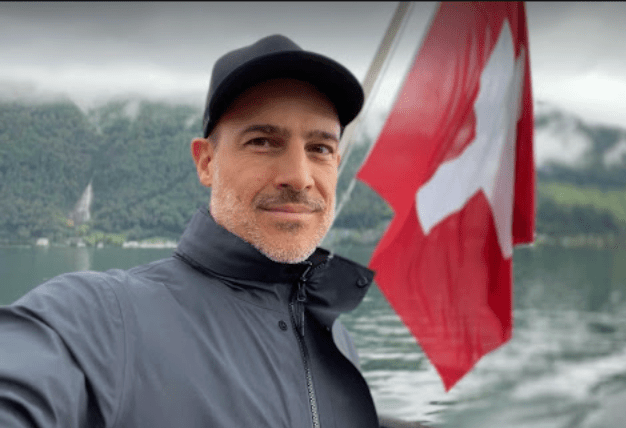
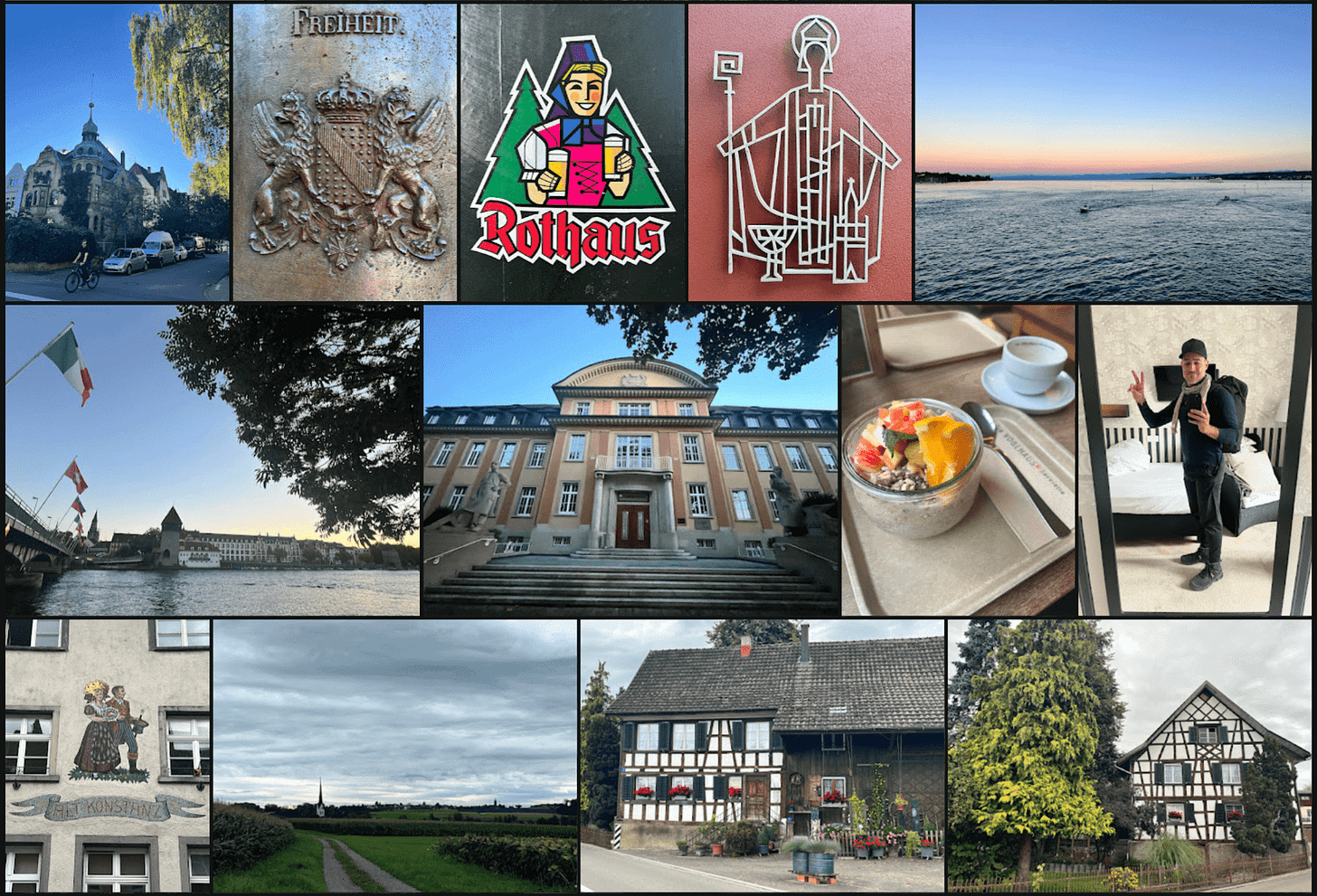
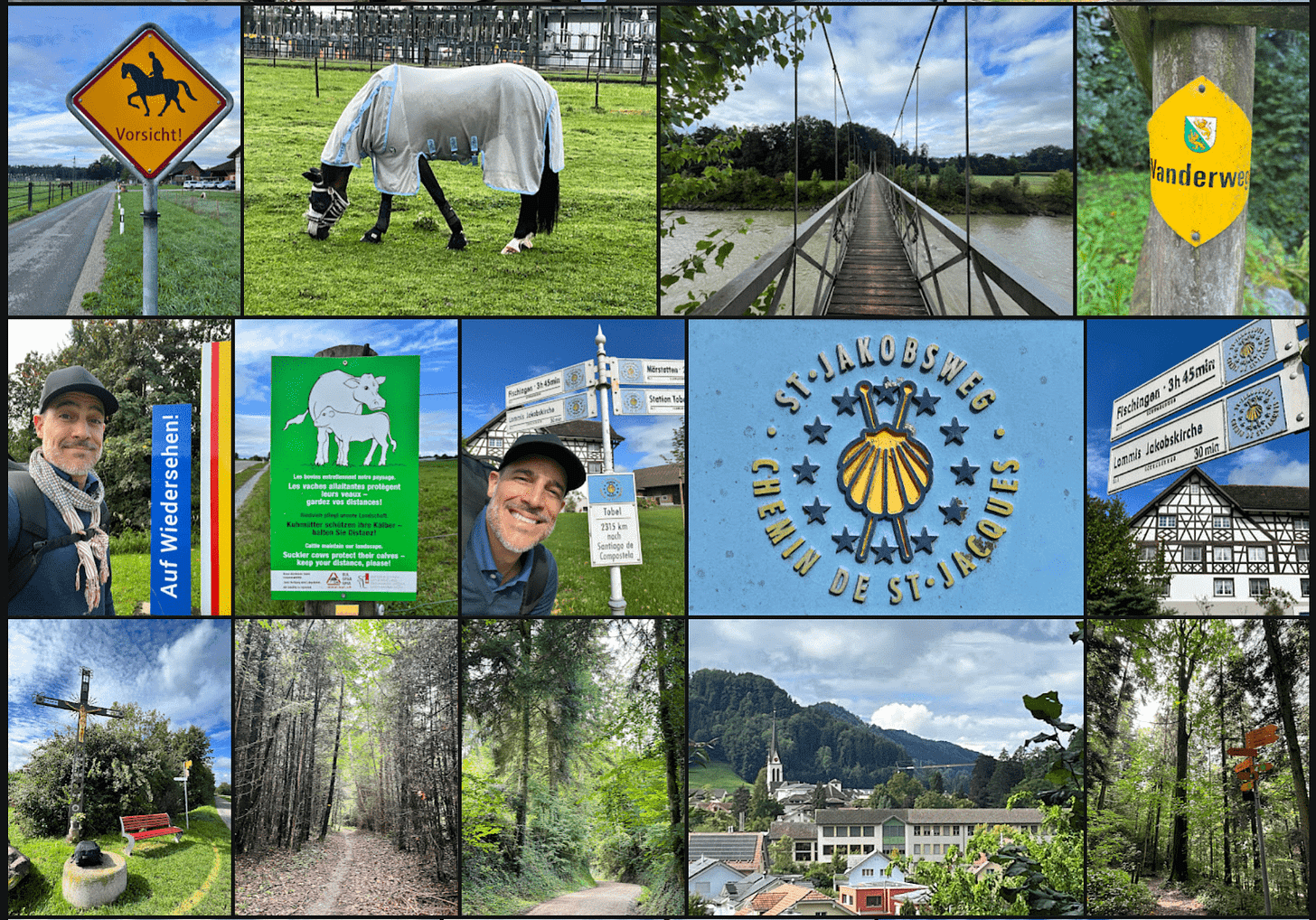
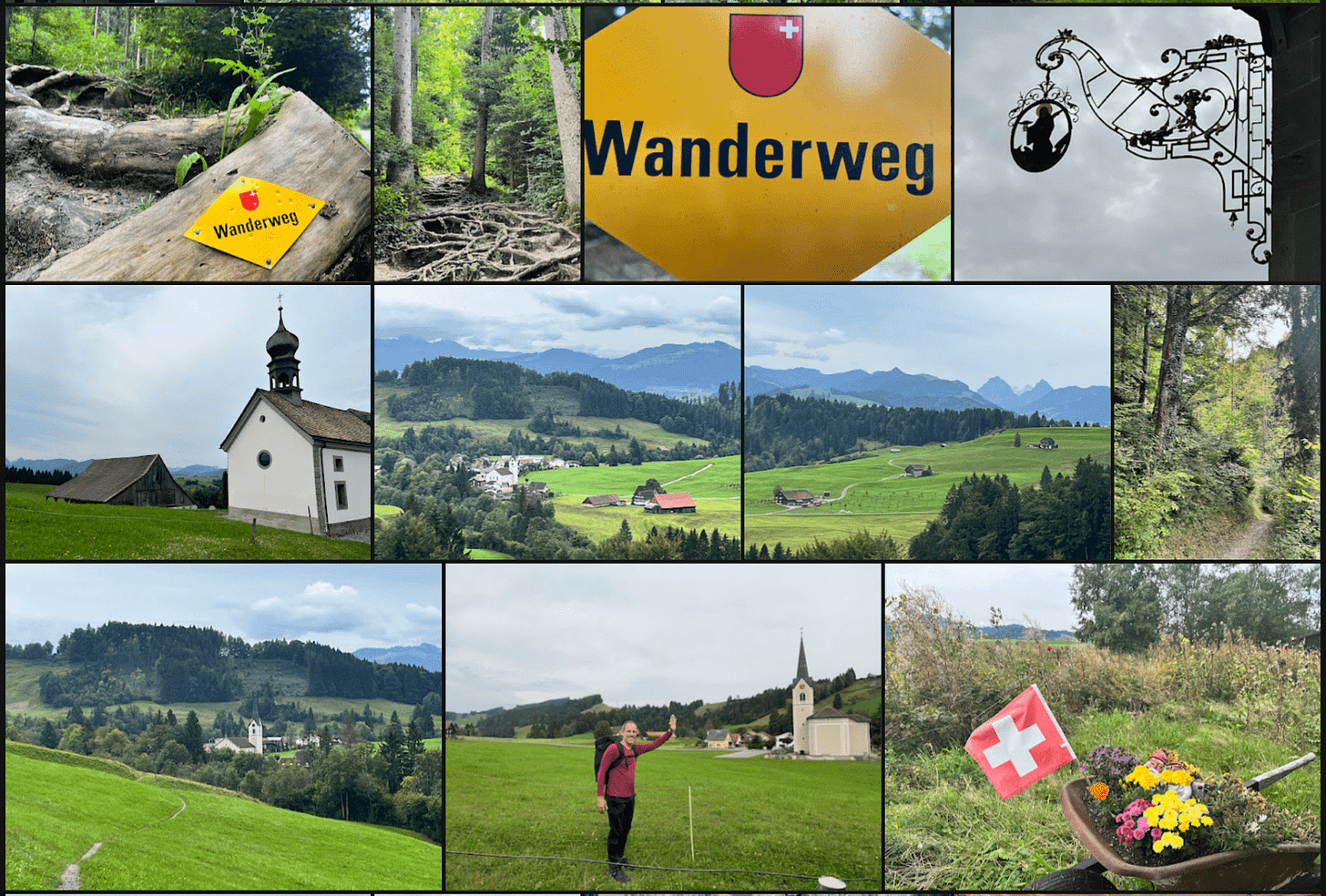
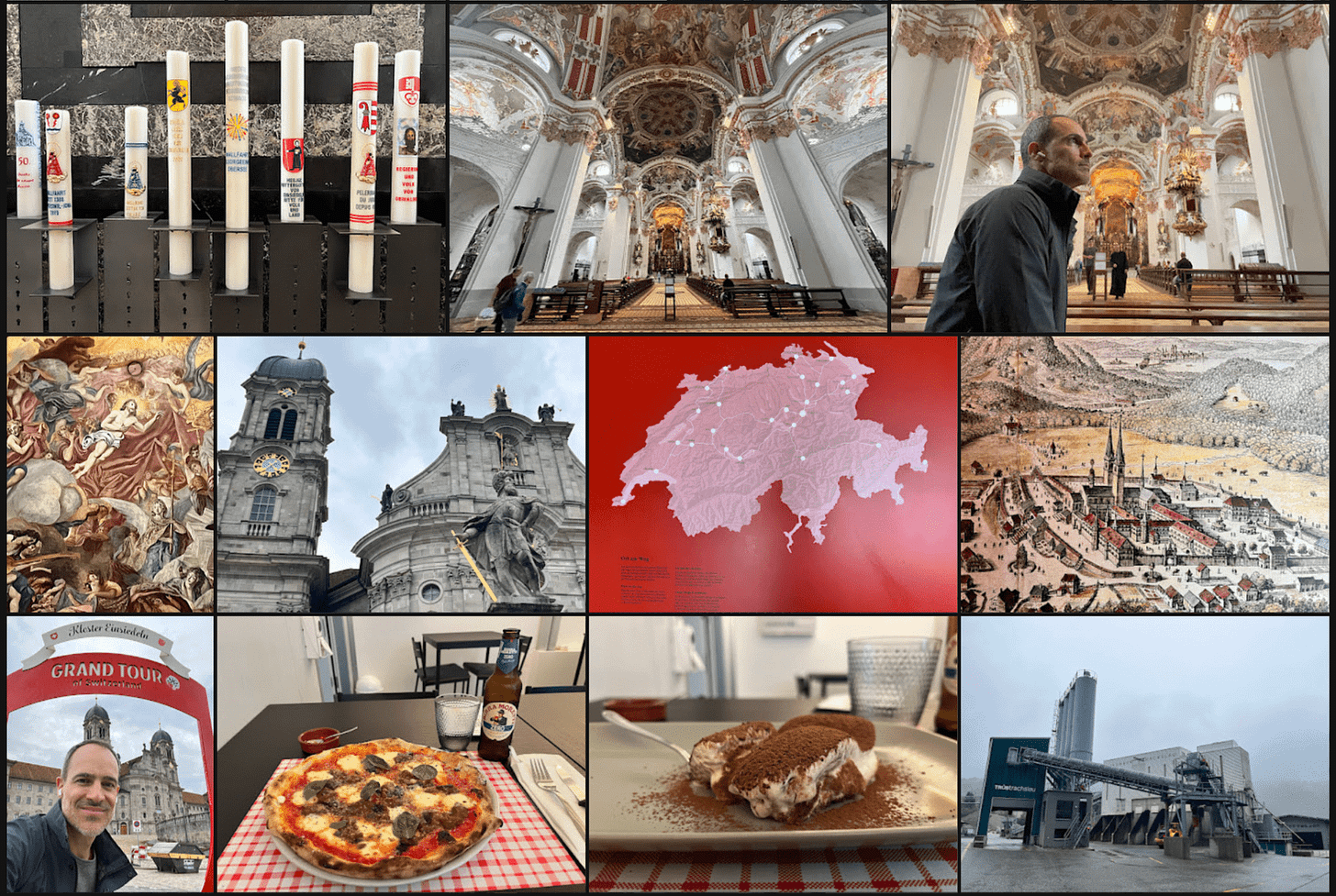
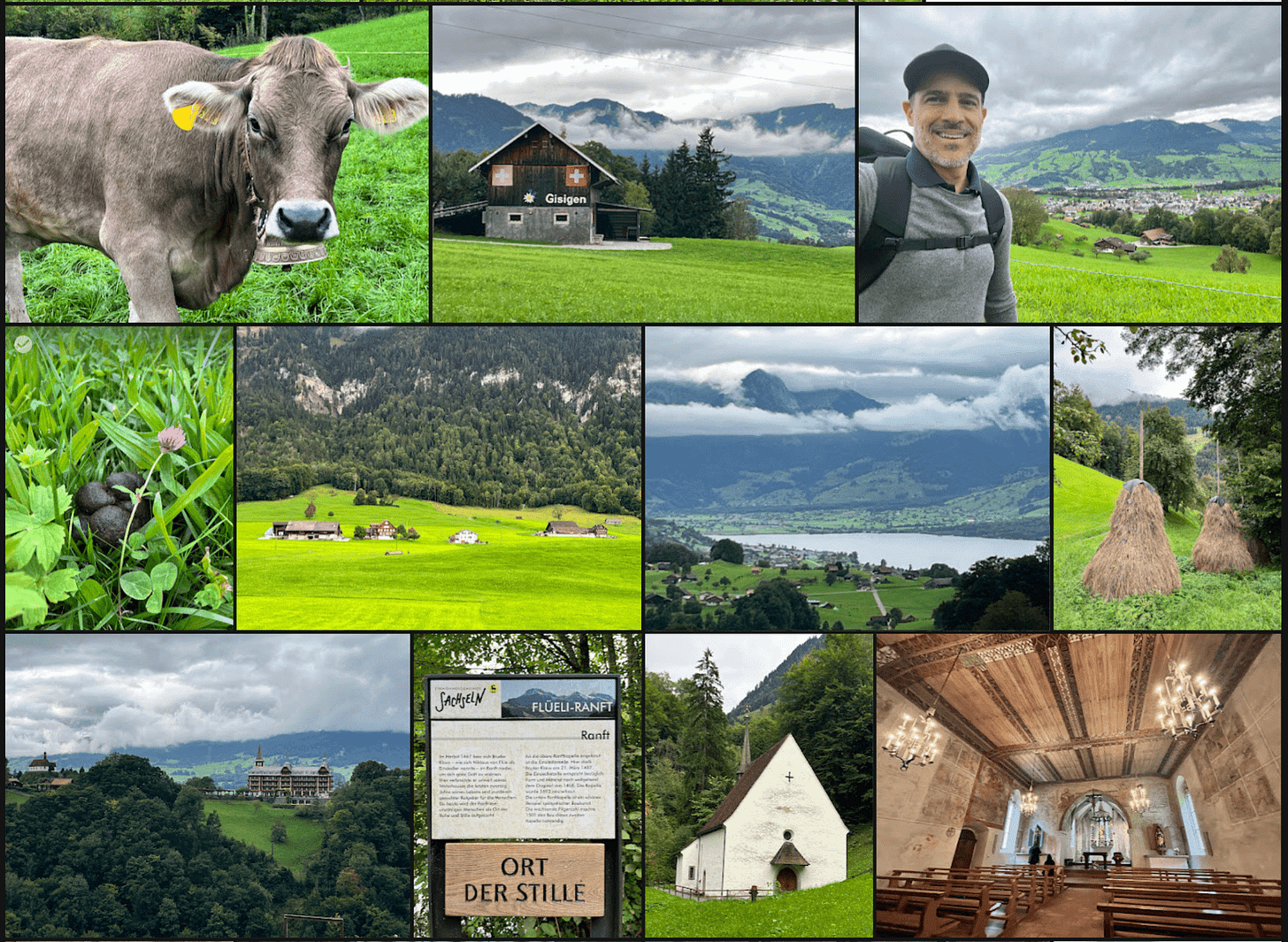
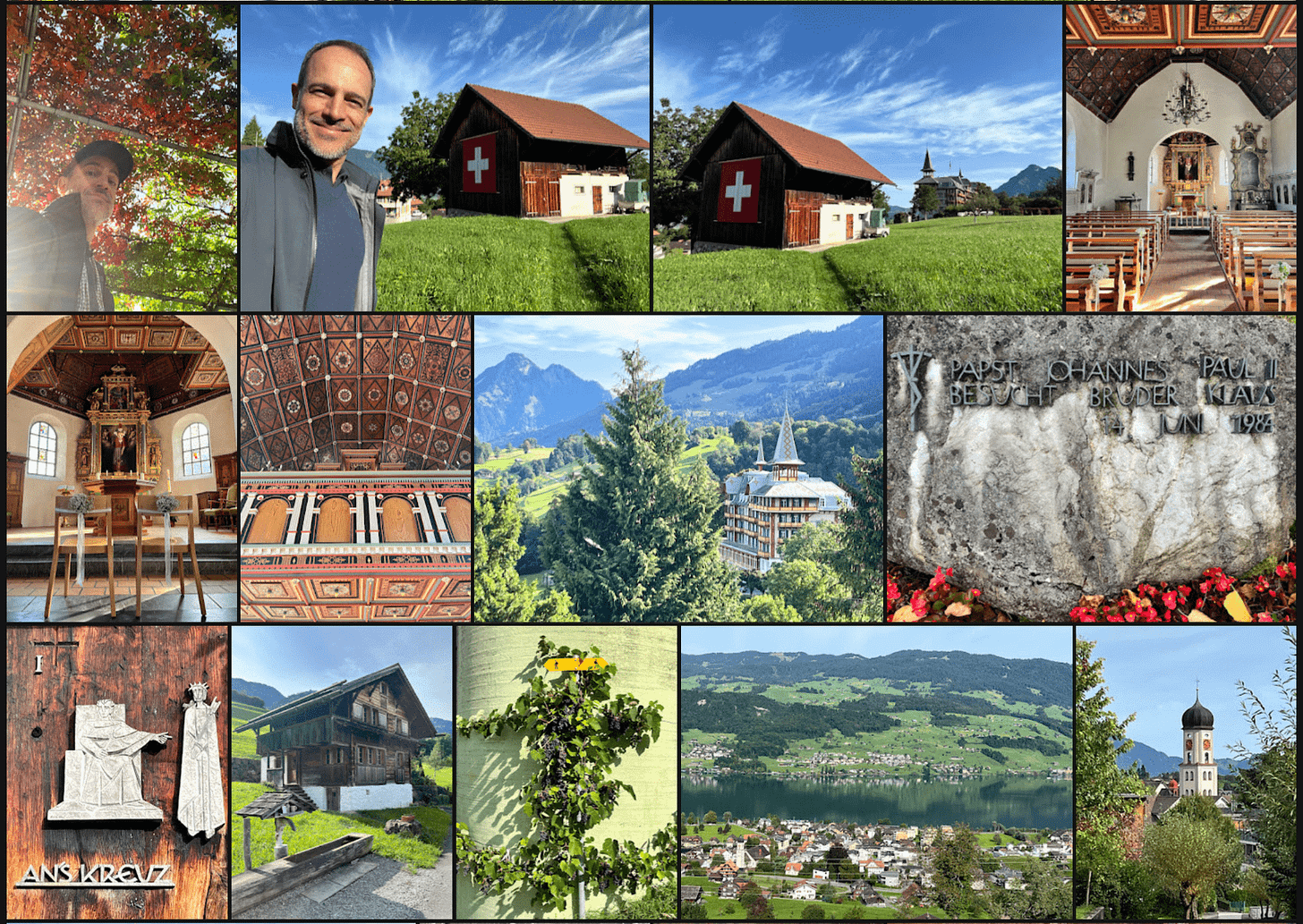
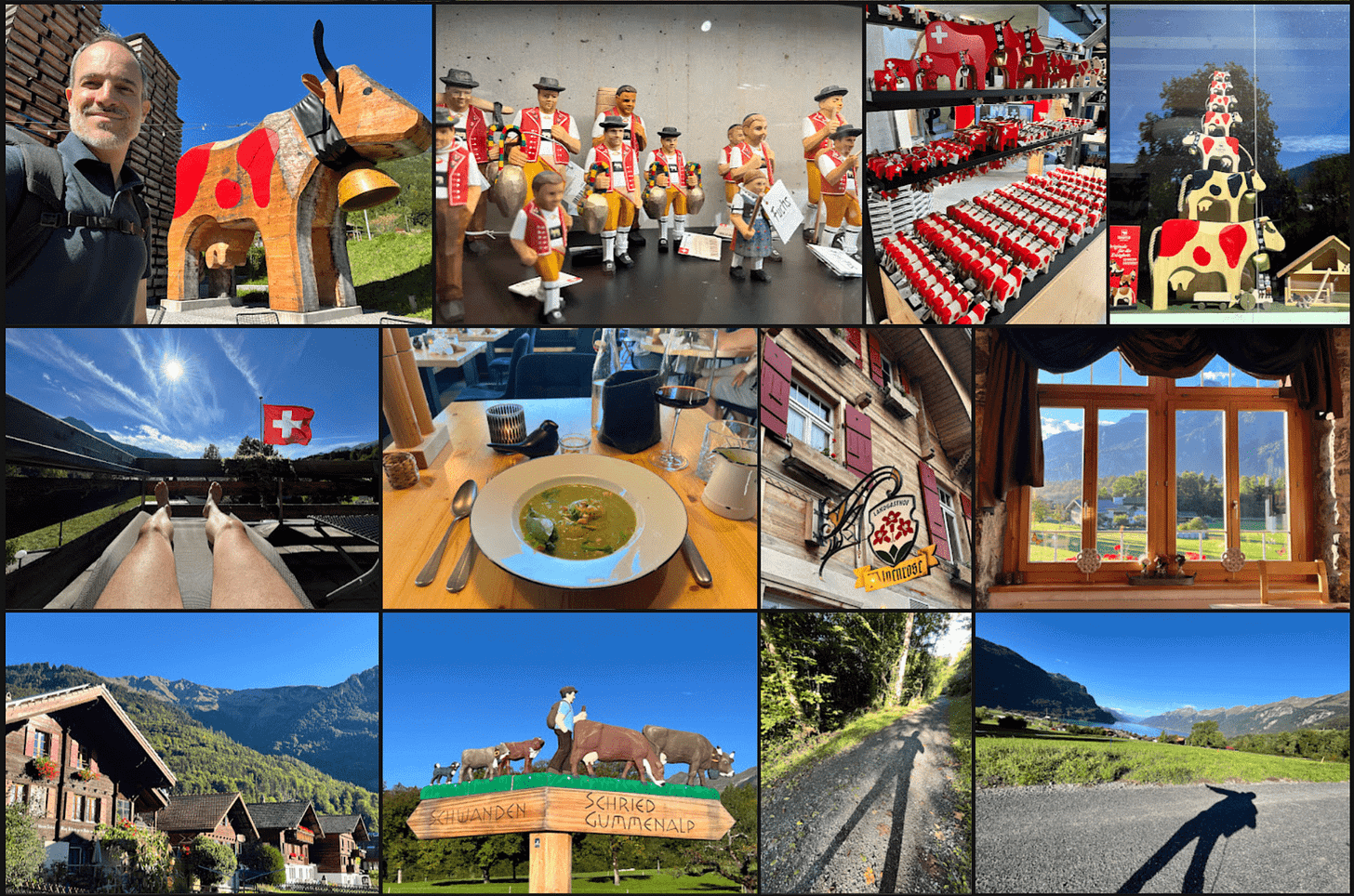
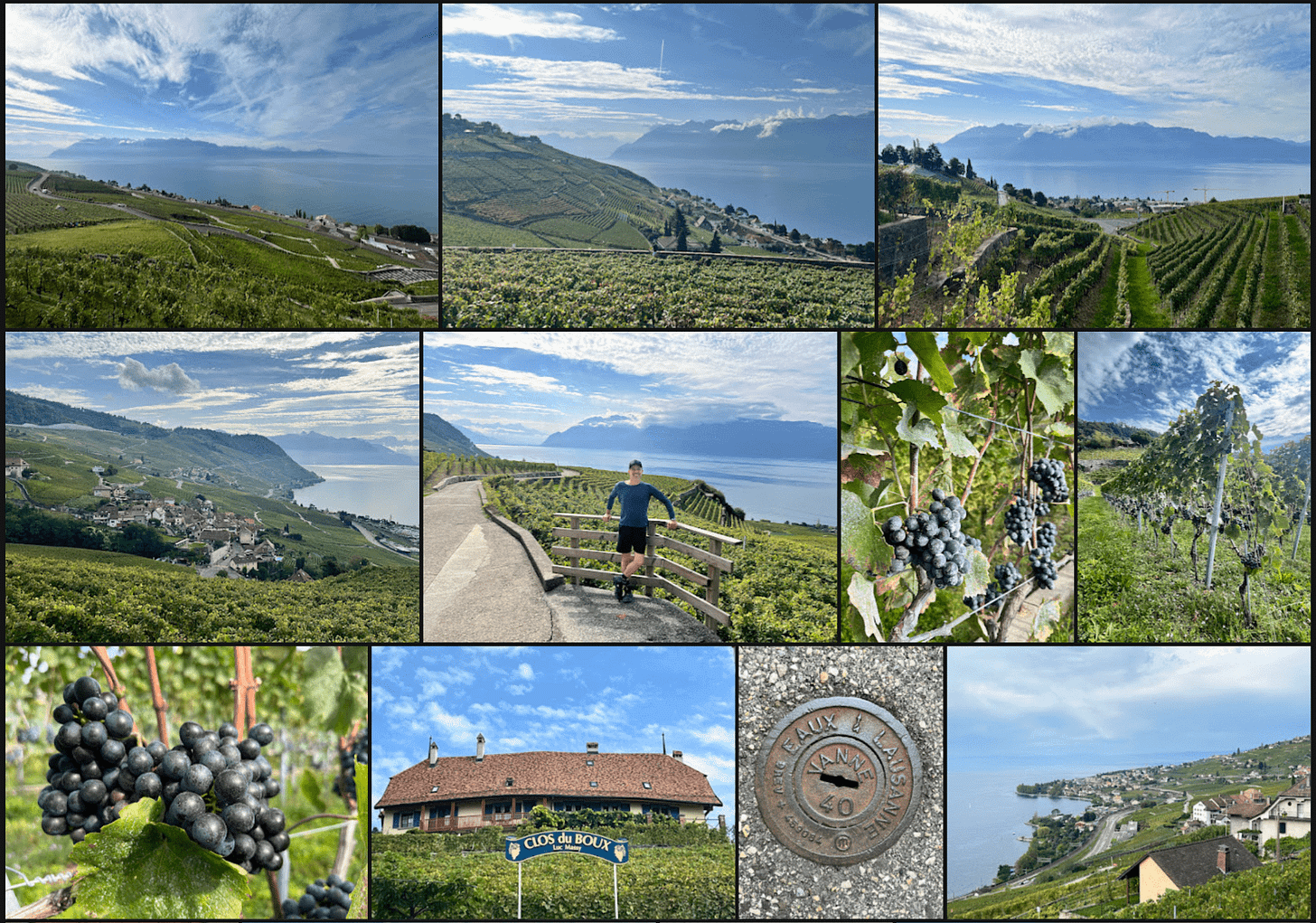
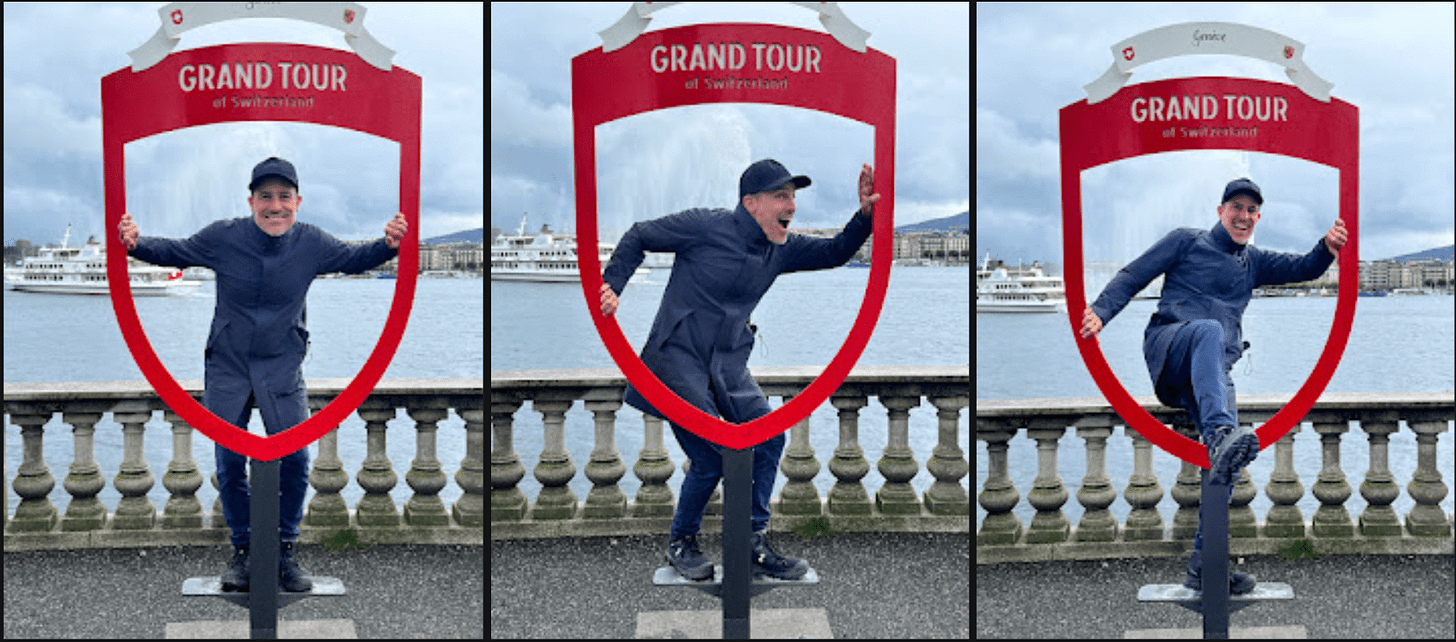
Que Show Vi, muito obrigado por compartilhar suas aventuras. Sempre uma aula de inspiração e coragem.
Abraço
Como é bom viajar assim pelo seu olhar e pelas suas palavras. Nao pare nunca! Bom retorno e que a proxima seja ainda mais incrivel .